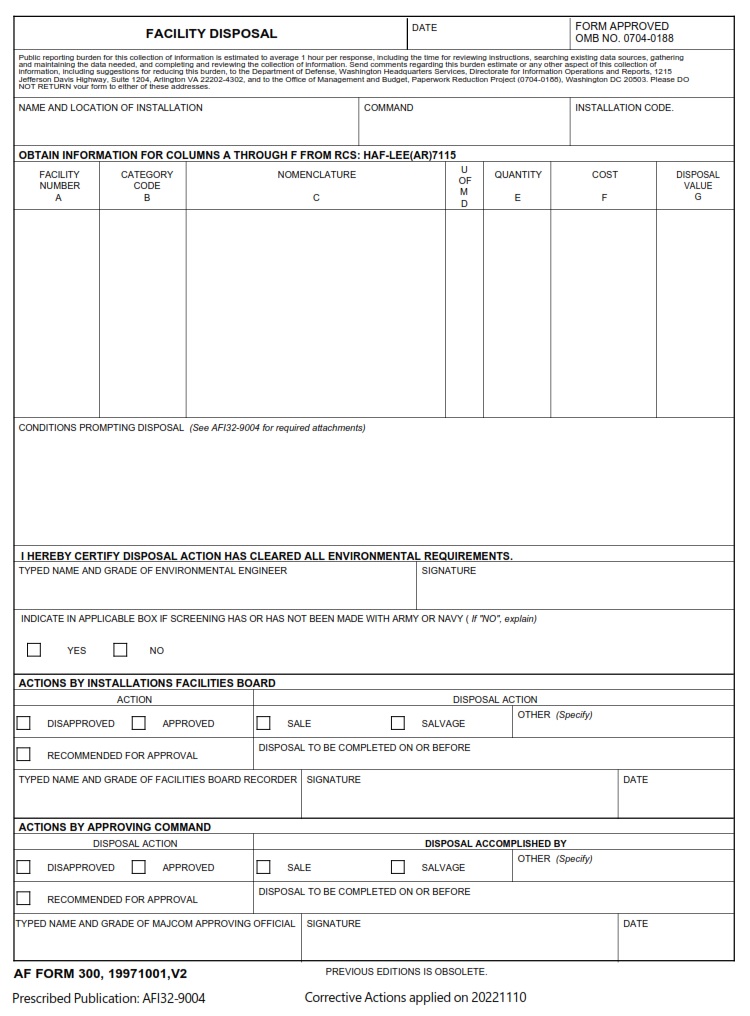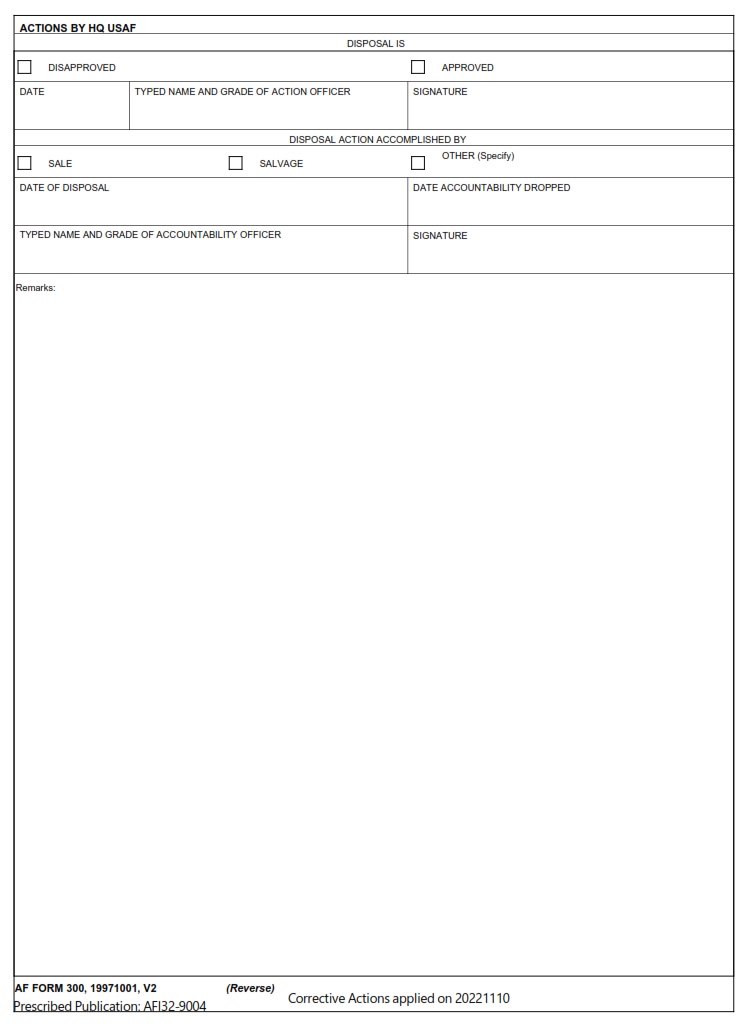AF-FORMS.COM – AF Form 300 – Facility Disposal – Are you tired of the clutter and disorganization in your workspace? Do you find yourself constantly navigating around outdated equipment and unused furniture? If so, you’re not alone. Many facilities struggle with the challenge of disposing of unneeded items in a timely and efficient manner. However, fear not, because help is at hand in the form of AF Form 300 – Facility Disposal. This crucial document provides a framework for managing the disposal of excess property within Air Force facilities, offering a streamlined approach to decluttering and optimizing workspaces.
Imagine walking into your facility and being greeted by a clean, organized environment where every item serves a purpose and contributes to productivity. With AF Form 300 as your guide, this vision can become a reality. From surplus office supplies to obsolete machinery, this form empowers facility managers to take control of their space by facilitating the proper disposal of unneeded assets. In this article, we will explore the ins and outs of AF Form 300 – Facility Disposal, shedding light on its significance and providing valuable insights into how it can revolutionize the way facilities manage their resources. Whether you’re an Air Force personnel or simply interested in efficient facility management practices, dive in as we uncover the power behind AF Form 300.
Download AF Form 300 – Facility Disposal
| Form Number | AF Form 300 |
| Form Title | Facility Disposal |
| Edition Date | 10/1/1997 |
| File Size | 29 KB |
AF-Form-300-Facility-Disposal.pdf (34 downloads )
What is an AF Form 300?
The AF Form 300 is a key document used by the Air Force to report and track facility disposals. It serves as a comprehensive record that documents the disposal process of Air Force facilities, ensuring accountability and compliance with regulations. This form captures essential details such as the type of disposal, reason for disposal, property description, environmental considerations, and approval signatures.
Furthermore, the AF Form 300 plays a critical role in maintaining transparency and integrity in facility management. By documenting every stage of disposal, from initial assessment to final disposition, this form contributes to effective resource utilization and cost management. Additionally, it enables the Air Force to analyze trends in facility disposals over time and identify opportunities for improvement or optimization in asset management practices. In essence, the AF Form 300 is not just a paperwork exercise; it is a vital tool for overseeing responsible stewardship of Air Force facilities and resources.
Where Can I Find an AF Form 300?
If you’re looking for an AF Form 300, commonly known as the Facility Disposal form, you can easily find it on the official website of the United States Air Force. This form is often used to document the disposal of government property and facilities, ensuring accountability and proper procedures are followed. By accessing the form directly from the Air Force’s website, you can be confident that you are using the most up-to-date and accurate version.
In addition to the official Air Force website, you may also be able to obtain an AF Form 300 through your unit’s administrative office or logistics department. It’s important to ensure that any forms related to facility disposal are completed accurately and in a timely manner to maintain compliance with regulations. Whether it’s for decommissioning equipment or disposing of a building, having a clear understanding of where to find this essential form is crucial for maintaining organizational efficiency and accountability within the Air Force.
AF Form 300 – Facility Disposal
AF Form 300, also known as the Facility Disposal Dashboard, serves as an essential tool for keeping track of facility disposal activities within the United States Air Force. It provides a comprehensive overview of the disposal process, including documentation and approvals required for disposing of equipment and materials. This form plays a crucial role in ensuring compliance with environmental regulations while efficiently managing the disposal of excess or obsolete inventory.
One interesting aspect of AF Form 300 is its integration with digital technology, allowing for real-time tracking and monitoring of disposal activities. This ensures increased accuracy and transparency in the disposal process, ultimately leading to more effective resource management and cost savings. Additionally, by providing detailed data on disposal trends and patterns, AF Form 300 facilitates proactive decision-making regarding inventory management and procurement strategies.
Overall, AF Form 300 is not just a bureaucratic requirement but a powerful tool that enables the Air Force to streamline its facility disposal processes while promoting sustainability and responsible stewardship of resources. Its integration with technology reflects the Air Force’s commitment to embracing innovation in every aspect of its operations, ultimately contributing to more efficient and environmentally conscious practices.

